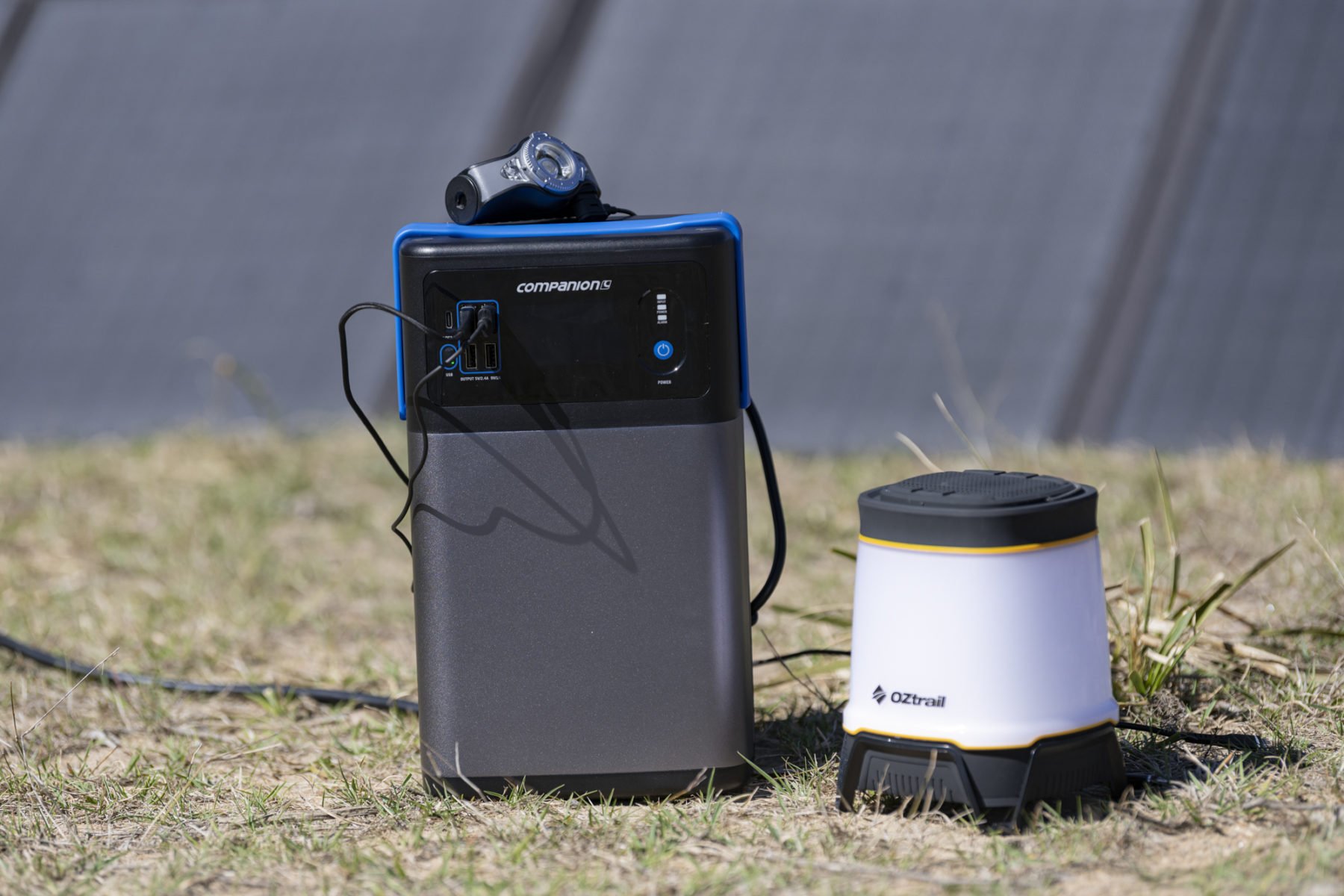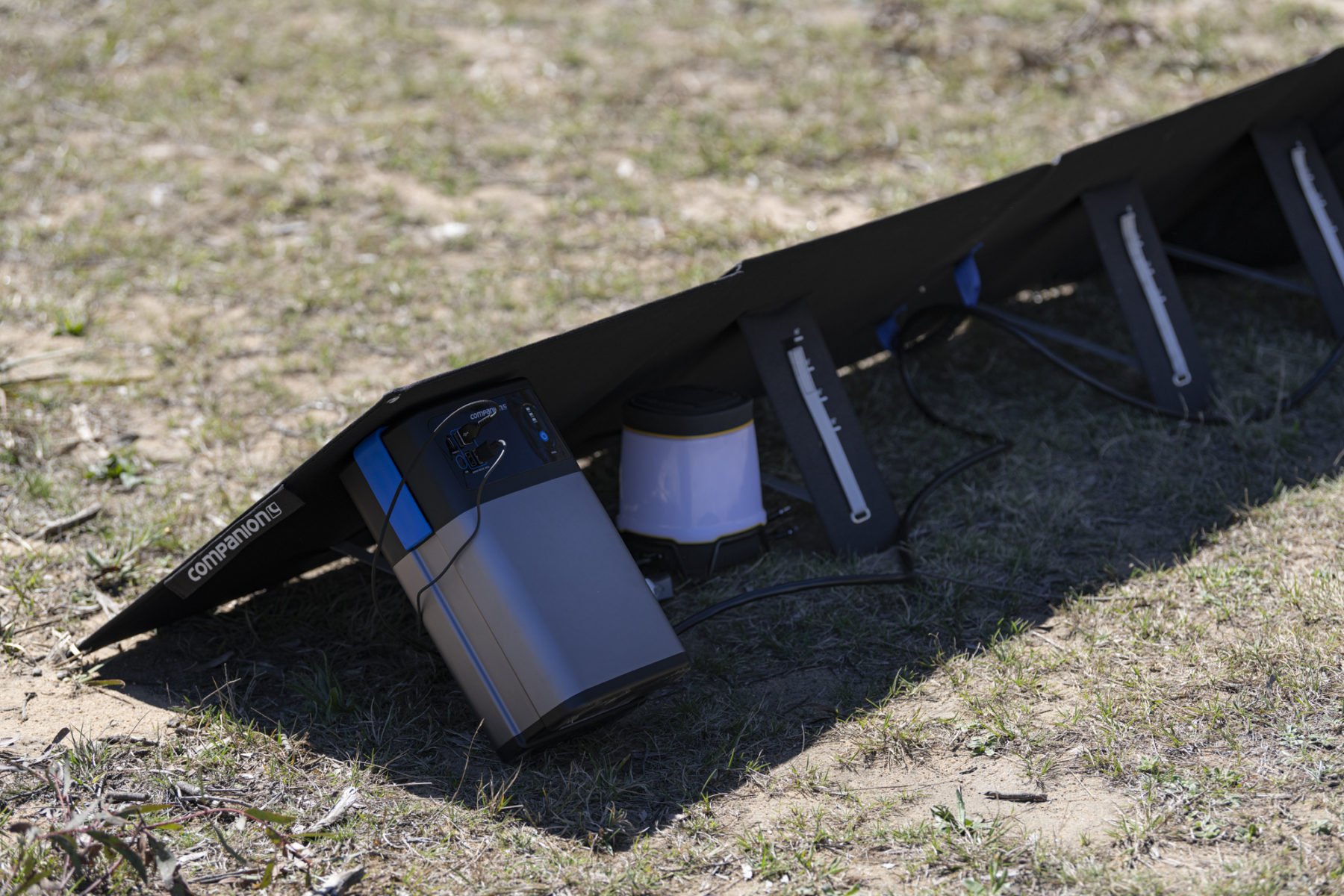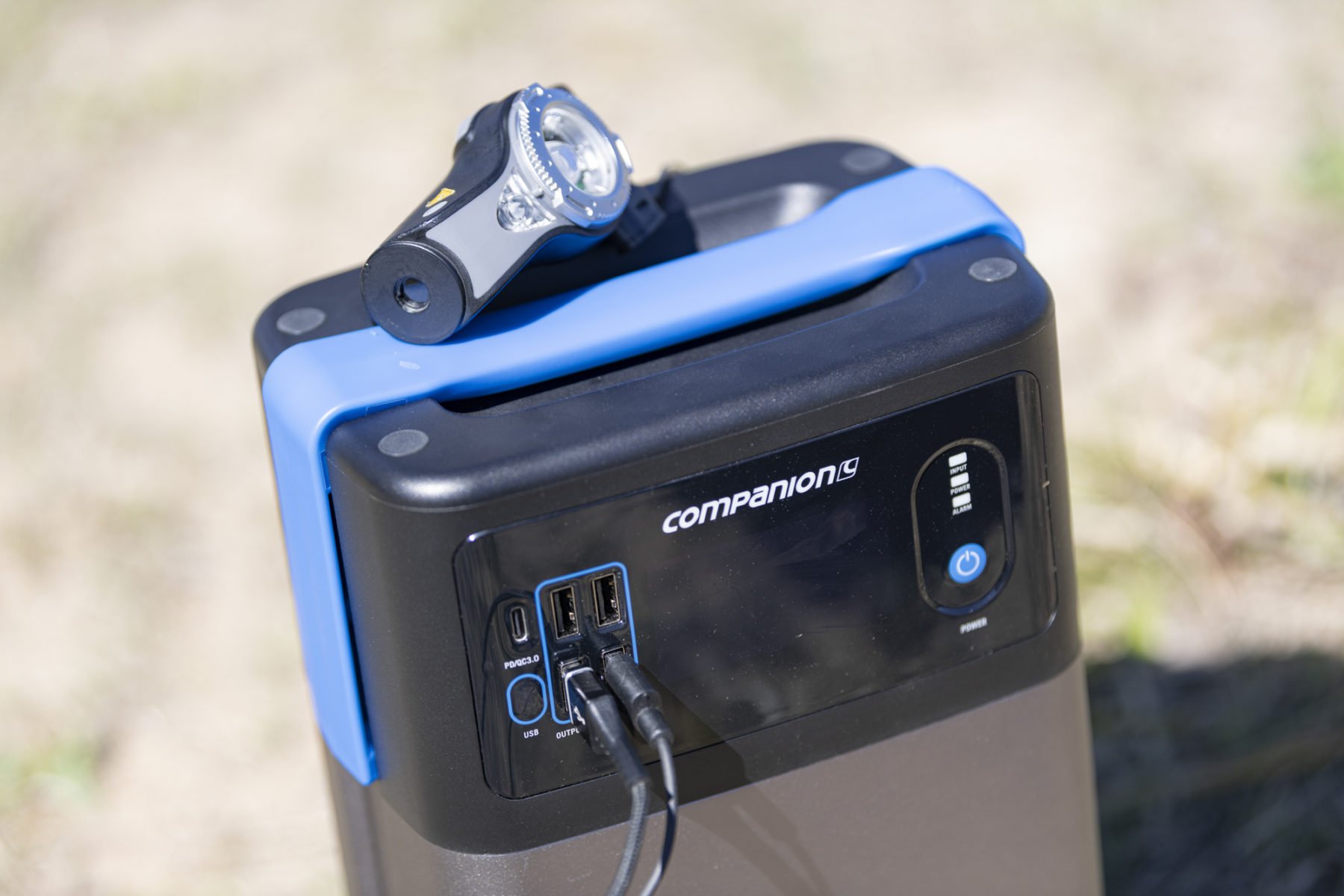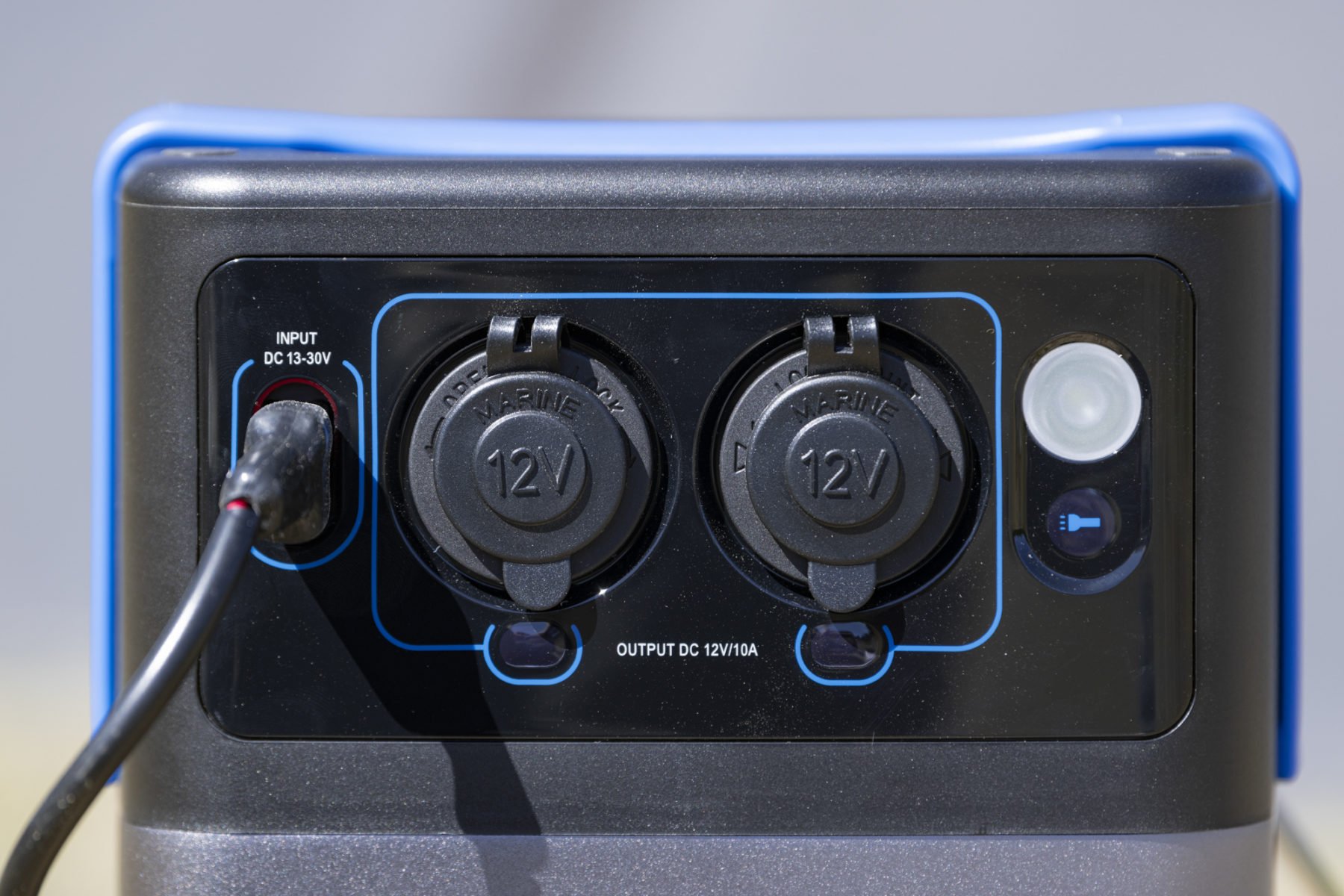Companion Rover Lithium 70Ah Power Station: Tested

It wasn’t long ago when camping with AC/DC meant enjoying a fireside beverage whilst Angus Young belted out some high-voltage rock-n-roll on a crackling AM radio. In today’s world of advancing technology and an appetite for digital luxuries, AC/DC has a different meaning altogether. The luxury of camp-tunes remains, but they now exude from a rechargeable lithium-ion lantern-speaker linked via Bluetooth to a smartphone. More importantly, beverages stay cold, even if yesterday’s servo had no ice, because their home is a 12-volt dual zone fridge/freezer. In fact, high-voltage now relates more to fast electron-created go-go-juice for digital devices rather than an iconic rock band. Whether you like it or not, battery-power is here to stay as we enter the age of the lithium power station. The Companion Rover Lithium 70Ah Power Station is one of the latest examples of this technology.
Design
When considering battery banks, battery boxes, or power stations there are several factors. Primarily “what do I need to power?” If only a smartphone and GoPro then we will likely manage a few days with a pocket sized power-bank. If we extend our trip to a week, add a camera and headtorch, then a lightweight solar unit might better suit. However, if we want to keep the phone topped up, the fridge cool, LED lights on, and tunes rolling, a large capacity power station should be on the cards, and the Companion Rover Lithium 70Ah Power Station might be just the ticket.

What is immediately evident when picking up the 70Ah Power Station is its portability. At 128mm x 190mm x 310mm it can squeeze between the fridge and duffle in the car and its 6.8-kilogram weight means the station delivers a massive punch for a unit that barely turns the scales. Companion has done a brilliant job of producing this powerhouse in such a compact package.
To understand why we must get geeky for a second. The Rover uses a sub-7kg Lithium-Nickel-Manganese-Cobalt-Oxide (NMC). This type of battery allows the station to use nearly 95% of the battery’s capacity and deliver thousands of discharge/recharge cycles (although the battery capacity may drop to 80% beyond 800 cycles). Compare that to a battery-box with an Absorbed Glass Mat (AGM) battery and you’ll find the battery box needs to use a 30kg, 140Ah AGM battery (only able to access 50% of its available capacity to 500 cycles) to deliver the same amount of usable energy. Thus, the Companion Rover Lithium 70Ah offers the equivalent accessible capacity at one quarter of the weight, with up to double the lifespan, or more. Importantly, the battery is kept optimised by built-in battery protection, including over temperature, under temperature, over voltage, under voltage, over current, short circuit, and incorrect polarity, proving there’s no shortcuts on safety. Enough tech talk, let’s talk usability: this is where the Rover Power Station really stands out.
In the field
Once turned on, three LED lights offer a glance at what’s going on. The power LED informs you the unit is turned on, the input LED illuminates when the unit is charging, and the alarm LED illuminates when the USB or 12V sockets are active. An LCD then offers battery capacity, input wattage (if charging) and output wattage (if discharging), and the LCD turns off after 30 seconds to save power.
The Rover has three-way charging capability via AC, DC or Solar, all charging through an inbuilt battery management system via an Anderson PowerPole connector. This means you can plug it into the wall, the car or solar, walk away and forget about it. It takes around 14 hours to charge from empty plugging into a house socket and about the same if charging via a vehicle’s 12V DC connection. Mother nature does better: coupled with Companion’s 200W Solar panels the unit goes from zero to full charge in under 12 hours.

Companion’s 200W Solar Charger is the perfect partner to the Rover Lithium 70Ah Power Station. The unit is very compact at 52.5L x 52.5W x 9.5H cm and weighs around 10 kilograms for the panel, PWM Controller, five-metre Anderson cable and Anderson to battery clamp cable, all contained neatly within its inbuilt 900D polyester case.
Open, the 200W system expands to a 2.61m long and 52.5cm high ETFE laminated five-segment solar-panel with 19.5% efficient, A-grade monocrystalline silicon cells delivering 11.1 amps per hour and 18V max power via a 50A Anderson plug. The unfolded cells feature inbuilt adjustable stands, peg and tie-down points as well as hanging eyelets at each end. For charging batteries without inbuilt MPPT controllers, the panel includes a 3-stage Pulse Width Modulation (PWM) 20A controller with digital display and USB outlet.
Impressively, the Rover Lithium 70Ah Power Station contains an inbuilt MPPT controller, allowing solar panels to plug directly into it for single-lead plug-and-charge capability. We plugged our 59% station into the 200W solar panels on a sunny afternoon (delivering around 85 Watts) and returned three hours later to an 80% charged battery.
The Rover Lithium 70Ah Power Station has a mass of the most common power outlets including four USB-A outlets (2.4 Amp) and one USB-C outlet (3Amp) on the front. On the rear a 12V (10Amp cigarette) socket, and a 12V 2-pin (10Amp Engel-style) socket offer a combined maximum 16Amp output for powering larger devices like the fridge. Oh, and there’s an inbuilt LED torch we initially dismissed with a chuckle but later found useful for moving the station around at night or having in the back of the car.

Four USB-A outlets and one USB-C cover all the electronic gadgets you use at camp. 
Two 12V outlets on the rear mean your fridge/freezer is powered, and there’s a handy light as well.
A big win for the Rover is its simultaneous charge and discharge capability, allowing the station to accept charge from solar panels and power the fridge at the same time. I plugged the unit into the solar panels on a sunny day and not only charged the power station, but my Bluetooth speaker lantern and headtorch simultaneously, the devices drawing 23W from the power station whilst it charged from solar. If I really wanted to boost solar input capabilities, I could have chained my 120W panel into the system.
If we wanted to be picky – and we always do – then there are a few niggles we would like to see addressed. Whilst the LCD is easy to read dusk-to-dawn, it is darned near impossible to read in bright daylight due to the brightness level and the glossy finish of the screen. For after dusk, we ask Companion’s design team to rethink the integrated 12V and USB buttons so they can be seen or felt in the dark as the smooth finish makes them difficult to find.
And while we’re asking for the world, we may as well request pure sine wave inverter technology to deliver 240V AC to a three-pin plug. We understand many new devices power via 12V or USB-C, but plenty still do not.
The final word on the Companion Rover Lithium 70Ah Power Station
We rate the Companion Rover Lithium 70Ah Power Station and the 200W Solar Charger, combined, as an exceptional solution for off-grid power. The combined system’s size, weight and ease of use delivers bonus points aplenty. We’d love to see a brighter screen and some AC output on the Power Station, but we’re not turning away for a few ‘wants’. We will continue to listen to Angus Young’s riffs from a recharged lithium-ion Bluetooth lantern-speaker as we grab a coldie one from our 12V fridge freezer. We might not have AC, but we have DC aplenty.
RRP: $1400 See Companion Outdoor for this and its other excellent portable power products.






